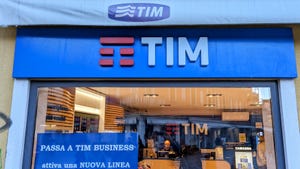Apple and Google key to rocketing eSIM figuresApple and Google key to rocketing eSIM figures
The number of eSIMs installed in connected devices worldwide will increase by more than 2 billion over the next four years, driven by consumer giants Apple and Google.
March 29, 2021

The number of eSIMs installed in connected devices worldwide will increase by more than 2 billion over the next four years, driven by consumer giants Apple and Google.
There will be 3.4 billion eSIMs in connected devices in 2025, up 180% from 1.2 billion this year, according to new figures from Juniper Research.
Market growth will be drive by the consumer side, which will account for 94% of the market in four years, the analyst firm said. That said, much will depend on the actions of the big names in the consumer connected devices space.
“[The forecast] anticipates that established adoption of eSIM frameworks from consumer device vendors, such as Apple and Google, will accelerate the growth of eSIMs in consumer devices ahead of the industrial and public sectors,” Juniper Research said.
However, the mobile operators will have their part to play too. Standard SIMs, found in mobile phones, tablets and the like, are the property of a single mobile operator. To switch operator, the user needs to change the SIM. The eSIM circumvents that requirement by including the capability to store multiple network operator profiles, and therefore an eSIM module can be embedded directly into a device. All which is a roundabout way of pointing out that there has historically been resistance to the eSIM model from the operator community. And while it is now becoming increasingly clear that eSIMs will be a key component of many Internet of Things (IoT) devices, it appears that the operators are not yet fully on board.
Juniper Research notes that it expects global eSIM deployments across all consumer verticals to grow by 170% over the next four years, but points out that widespread adoption will rely on backing from network operators. The firm said it “urges device manufacturers to place pressure on operators to support eSIM frameworks and accelerate market maturation.”
Some operators are making changes to their IoT businesses in line with market developments. Telenor last week brought together its domestic and international IoT units under a single umbrellas, a move that was in part driven by changing dynamics stemming from the rise of the eSIM. “Roaming is out and eSIM localisation is in,” Matt Hatton, founding partner of Transforma Insights, said.
It’s not just operators that face a changing landscape though.
As Juniper Research points out, there remains a fragmentation issue in the eSIM space that will trigger the launch of new players in the market.
As it stands, a fragmentation of hardware vendors in cellular IoT device means each vertical will have to adopt a combination of wireless technologies, hardware and management tools, the analyst firm said. “In turn, it predicts that specialist vendors will emerge that provide robust eSIM form factors for industrial environments,” it added.
Key industrial areas for eSIM adoption will include oil and gas, manufacturing, and logistics, it predicts, with eSIM installations across these verticals growing to 116 million by 2025, from 28 million this year. That’s a significant growth rate, but the volumes are much smaller than in the consumer space.
For now, the development of the eSIM market will depend on adoption in consumer devices, driven by the big OS providers, who are currently dragging reluctant telcos with them.
About the Author
You May Also Like










.png?width=300&auto=webp&quality=80&disable=upscale)


_1.jpg?width=300&auto=webp&quality=80&disable=upscale)